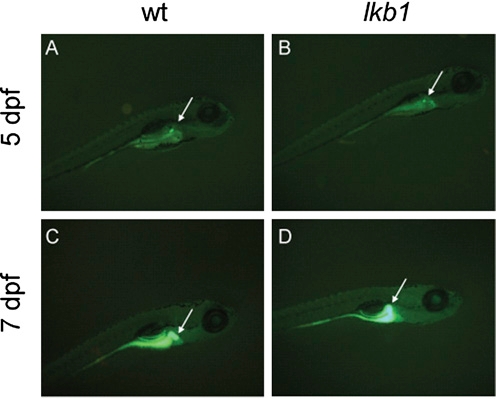Fig. S4
Intestinal lipid processing is intact in lkb1-mutant larvae. Fluorescent live images of WT larvae (A and C) and lkb1-mutant larvae (B and D) incubated with 0.3 g/mL N-{[6-(2,4- dinitrophenyl)amino]hexanoyl}-1-palmitoyl-2-BODIPY-FL-pentanoyl-sn-glycero-3-phosphoethanolamine (PED6) for 2 h. Lateral views, anterior to the right. Cleavage of PED6 by phospholipase A2 (PLA2) relieves intramolar quenching and results in increased fluorescence. Gall bladder fluorescence (arrow in all panels) is observed because of rapid transport through the intestine and hepatobilary systems. In lkb1-mutant larvae, fluorescence in both the intestinal lumen and gall bladder was detected at levels equivalent to those in WT larvae.

